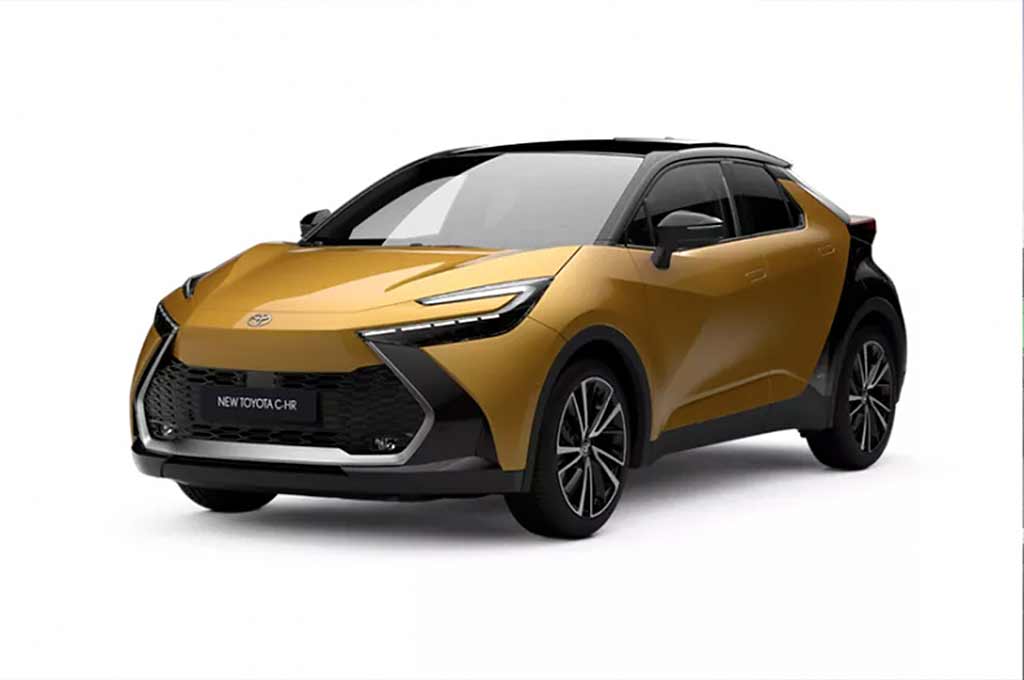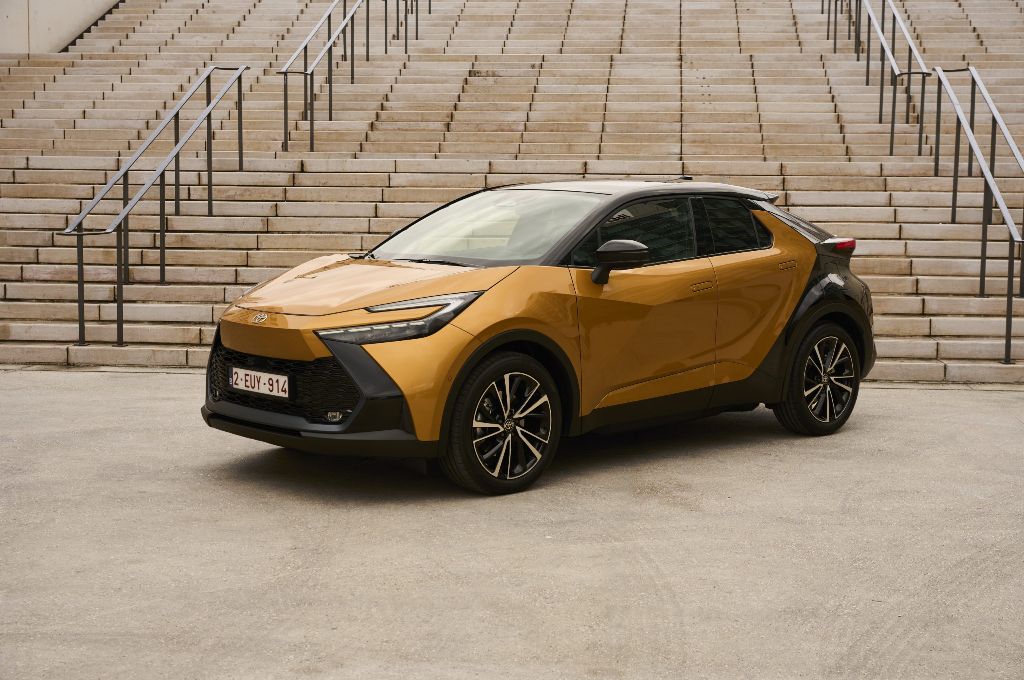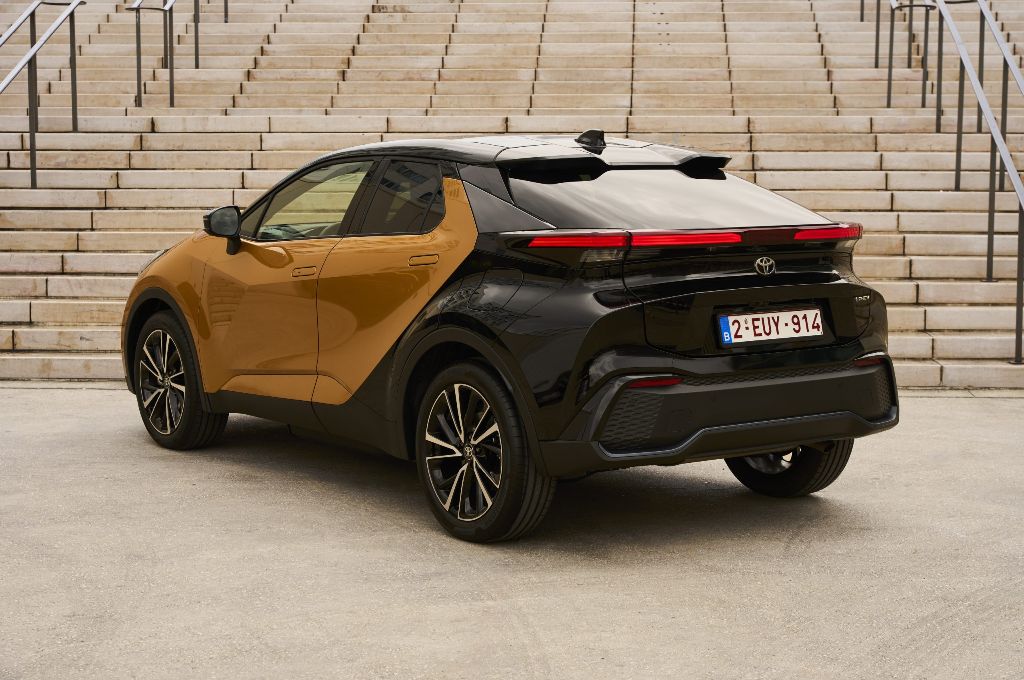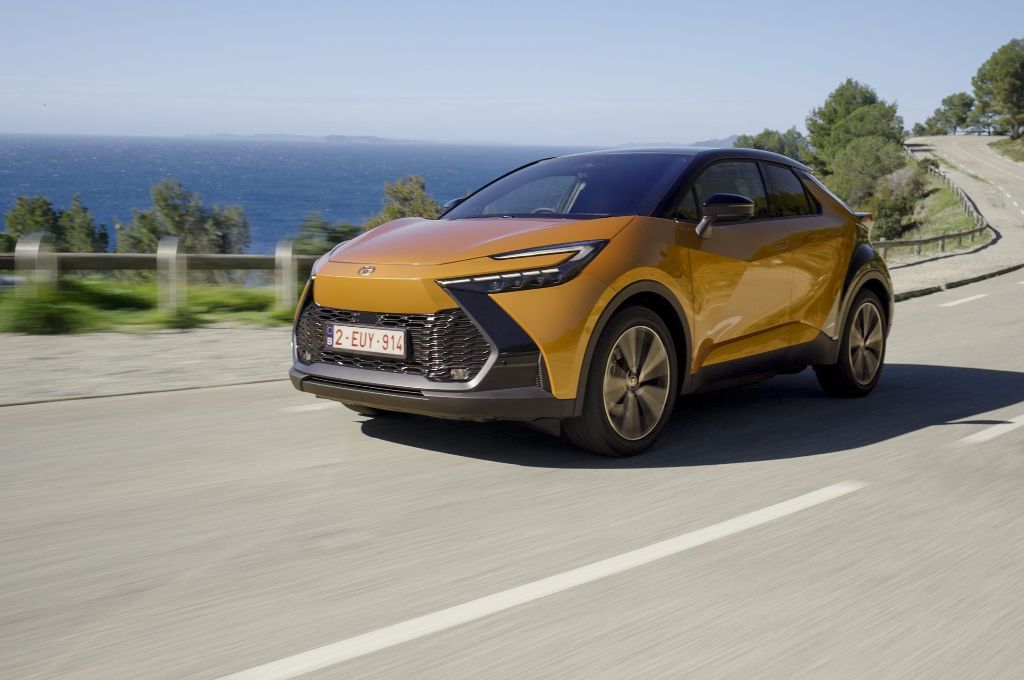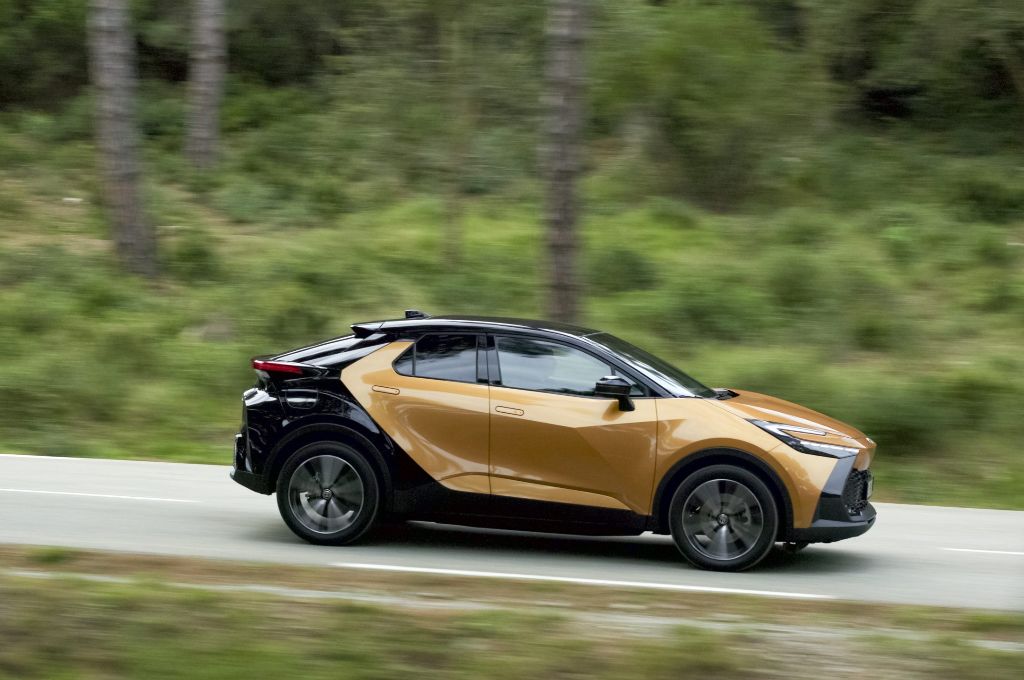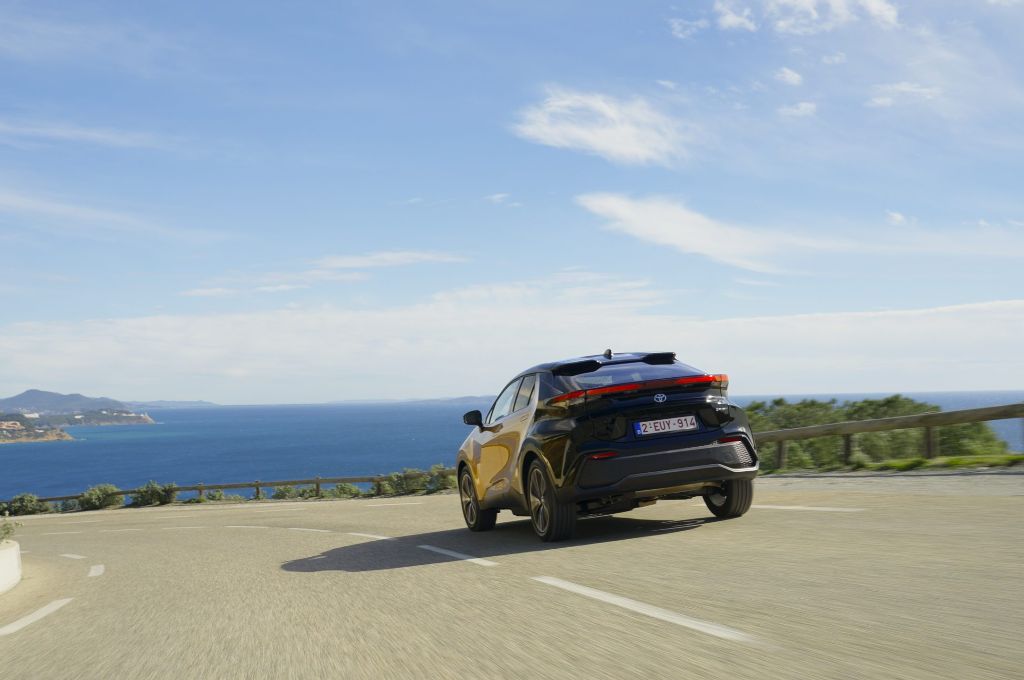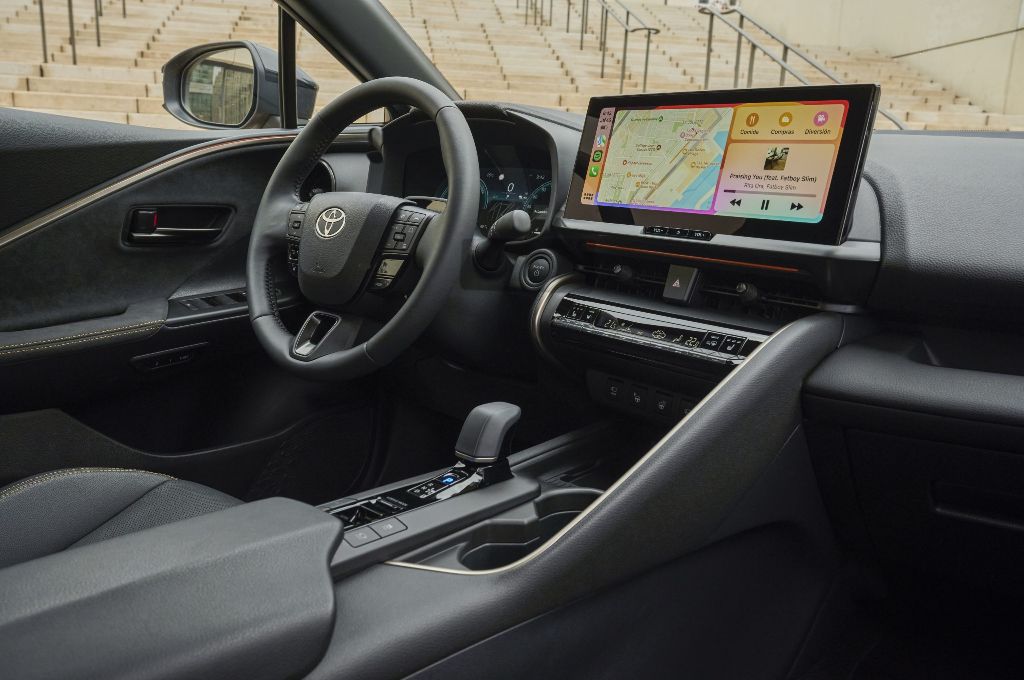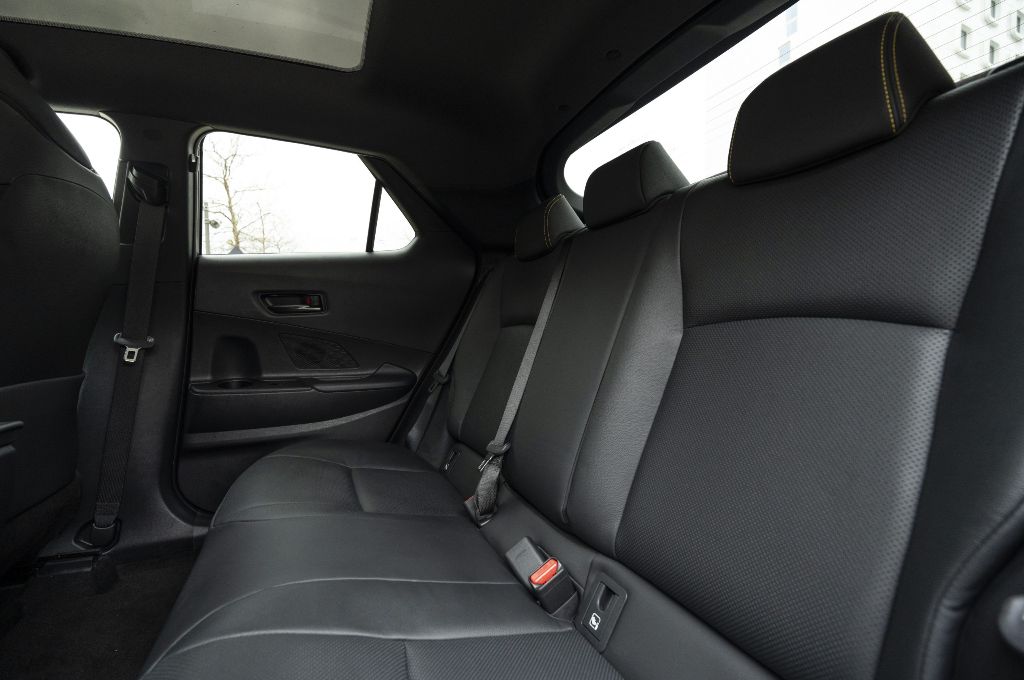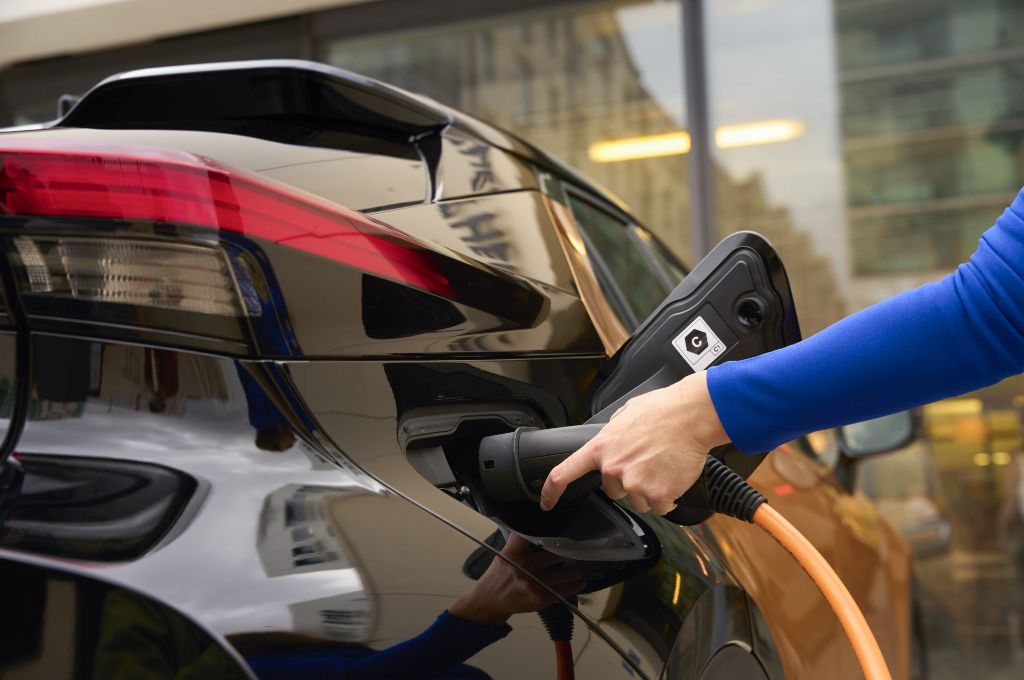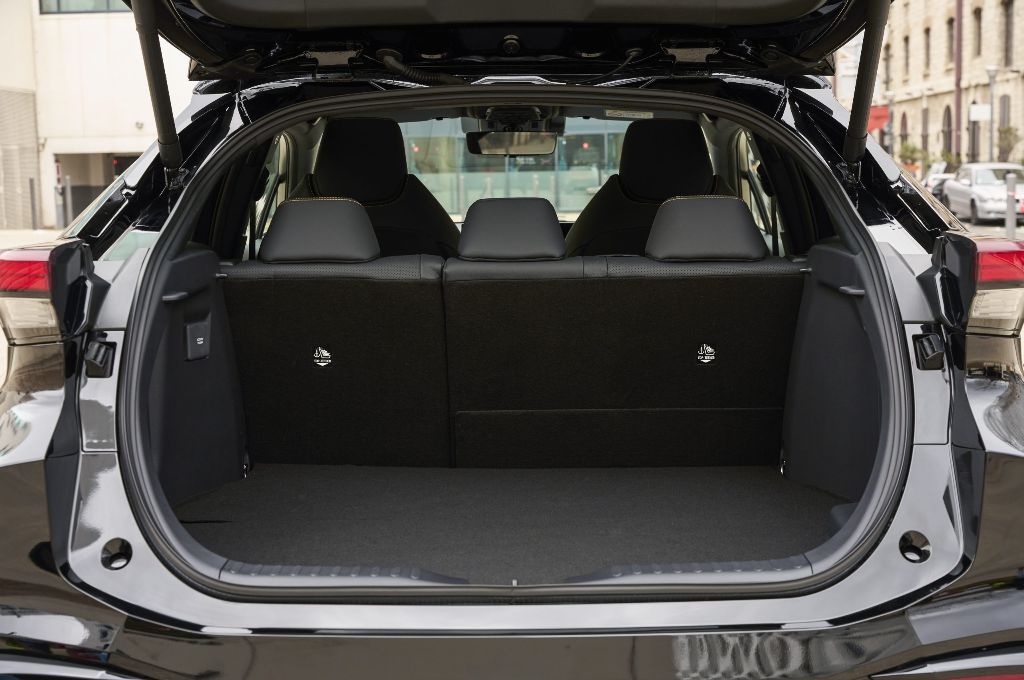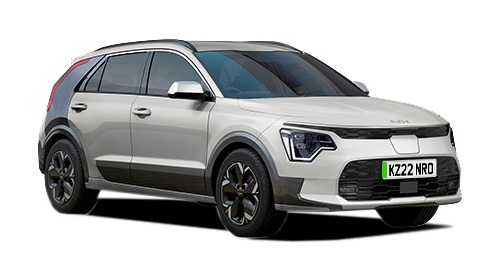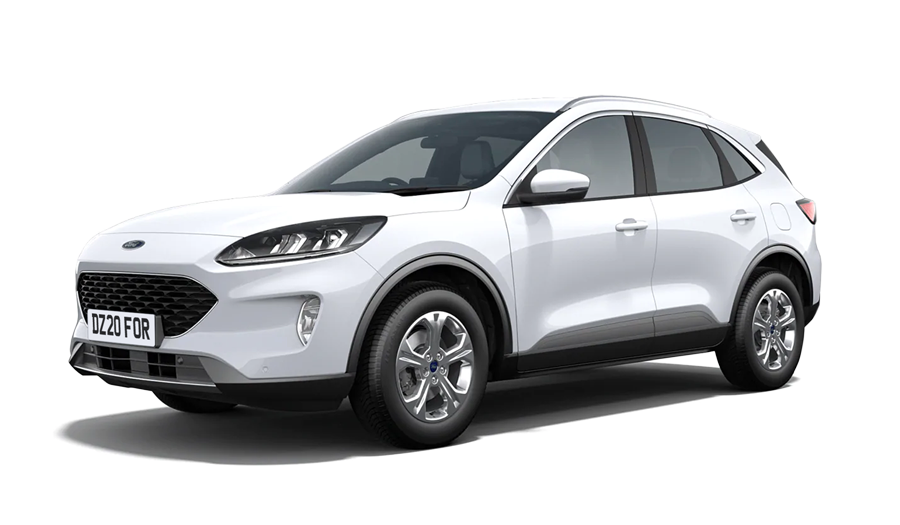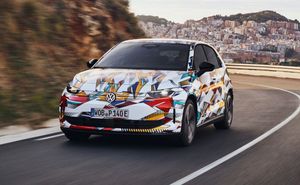You can’t miss the Toyota, though, despite its kaleidoscope of rivals. There are creases and whirls, and contrasting colours and that familiar shape that looks a bit like a fashionable trainer. Futuristic, striking styling is top of the list of reasons why you might rather fancy the C-HR for your next car.
That spaceship styling was one of the chief reasons for the huge success of the first generation of C-HR, which was introduced in 2016. That and the efficiency made it popular with a huge swathe of buyers who wanted a bit of SUV ride height and design swagger, but without sacrificing the economy and convenience of a small, hybrid car. This new, second generation C-HR sets out to offer more of the same but it’s now offered with a plug-in hybrid (PHEV) powertrain with an official electric range of 41 miles, as well a couple of full hybrid models. There's no full electric version, sadly. For an electric Toyota, you'll have to check out the bZ4X.
Here, we’re focussing on the Toyota C-HR Plug-In Hybrid, which may well be able to cover most routine local journeys without even bothering the 2.0-litre petrol engine that lurks under its short snout. And here at Electrifying, we are all about the electric power.
Range, Battery & Charging
The C-HR PHEV gets its electric chops from a 161bhp electric motor that drives the front wheels, and is powered by a 13.6kWh lithium-ion battery under the cabin floor. That’s good for a WLTP official range of 41 miles, although in the real world it’s safe to expect more like 30- to 36-miles depending on the conditions (colder weather and faster driving will always see electric range drop).
Once your electric running is up, there’s a 2.0-litre, four-cylinder petrol engine to keep you going, which drives through a CVT automatic gearbox.
As you’d expect, there are various drive modes to allow you to make the most of the hybrid functionality. You can stick it in Hybrid and forget about it, which works pretty well as the car will decide when it’s best to use its battery or petrol power, and it’ll even use the sat-nav and new ‘geo-fencing’ tech to automatically save electric power for any low emission zones that you may be headed for.
You can also tell the car to stick with electric power for as long as possible – and don’t worry, you can do motorway speeds in EV mode – or you can charge the battery using the petrol engine, albeit this is a slow process and will dent your fuel economy so can potentially be a false economy.
Charging speeds are up to 6.6kW, so if you plug into a standard 7kW wallbox, the battery will be charged in under three hours. It’s poor form that you have to pay a bit extra for the Type 2 cable to do this, but Toyota does provide a cable that allows you to plug into a standard three-pin domestic socket, which will deliver a full battery in around seven hours.
Practicality & Boot Space
It’s safe to say that the Toyota C-HR isn’t the best option if you want the most practical family SUV. It’s got the distinct feeling of being chunky on the outside but rather cramped inside, especially for those in the back seats.
It’s comfortable enough up front; long-legged drivers might find their knee rubbing the raised centre console, but there’s enough adjustment to the fairly low-set driving position that most will be comfortable. You also get heated seats on every C-HR PHEV, while sports seats and suede-effect upholstery are standard on Excel and GR Sport (the higher two trims in a three-trim lineup).
The problem is that it’s really quite poor for legroom in the back of the C-HR, and it’s also rather dark and pokey-feeling if you haven’t got the sunroof that also features on Excel and GR Sport but is optional on the entry-level Design trim. Make sure that the kids are comfortable back there before committing to the C-HR.
The boot isn’t brilliant in the C-HR Plug-in Hybrid, either. Some of the gubbins needed to make the Plug-in Hybrid powertrain work have meant losing some boot space, so you only get 310 litres of luggage space in the PHEV (as opposed to 388 litres in the standard hybrid C-HR). That’s pretty whelming, and may be a problem if you’ve got a chunky, off-road buggy or other big items to lug around.
If interior space is a chief concern, check out the Ford Kuga PHEV, which is a bit cheaper as well as bigger inside, or the fully electric Renault Scenic E-Tech is way roomier and has a very long range of nearly 400 miles for a similar price to the C-HR PHEV.
Interior, Design/Styling & Technology
It doesn’t look quite as extrovert inside as it does outside, the C-HR, but it’s still a nice place to be. The dash seems to sweep around the driver, framing the large central touchscreen and the row of air-con buttons beneath it. Steering wheel controls are a touch fussy and over-complicated, but the dash itself is actually very easy to use and feels usefully better quality than in the previous C-HR. It’s not quite as plush as the Renault Scenic, and we prefer the material quality in the Peugeot 3008, too. But the C-HR certainly feels well-built and is refreshingly uncomplicated and easy to use.
A 12.3-inch digital driver’s readout and a touchscreen of the same size are your windows to the C-HR’s soul, and it’s a huge leap on from Toyota infotainment systems of recent years. Not only do you now get Apple CarPlay and Android Auto, but the graphics are sharp, the screen response is mostly okay, and it’s not too difficult to hop around the system’s main features. We’d argue that the Hyundai Kona and Kia Niro infotainment systems are a touch more intuitive, but you’re not going to have any quibbles with the performance and features that you get in the Toyota – and it’s definitely better than the rather dated system in the Ford Kuga.
Equipment is very decent, with a parking camera, keyless entry, powered tailgate and 18-inch alloys standard on the C-HR Design. Excel grade ups the style with 19-inch wheels, bi-tone paint, sports seats and that glass roof – plus you can add a head-up display. GR Sport tops the range with even bigger wheels, JBL audio, adaptive high-beam LED lights and head-up display.
Safety kit includes adaptive cruise control, blind-spot monitoring, traffic sign recognition and even a function that tells you if there’s a cyclist or car coming when you’re about to open the car’s door.
Motors, Performance & Handling
The C-HR PHEV will do 0-62mph in 7.4 seconds, and it certainly feels more than sprightly enough in everyday use – as you’d expect of a car that gets a combined power output of 220bhp. You do get some rather coarse mooing from the petrol engine if you ask it to work hard, as the CVT automatic gearbox allows it to rev very hard, but in the sort of moderate ebb-and-flow of daily life that the Toyota is going to exist in it’s a chilled, pleasant car to drive.
That goes for the way it handles, too. Ride is well-judged, and while there’s a bit of heave- and dip from the car’s body over undulations and awkward cambers, the C-HR generally feels neat and tidy to drive, even on a more challenging road. We wouldn’t go so far as to say that it’s fun, but it is confident and responsive whether you’re wheeling through town or enjoying a nice country road.
Brake regeneration can be toggled up to a ‘B’ mode that offers very heavy recuperation, if not quite the one-pedal mode that you get in some electric cars and PHEVs.
Running Costs & Pricing
Plug-in hybrids tends to be popular with company car drivers as the low CO2 emissions make for cheap company car tax Benefit in Kind payments, and with CO2 from 19g/km the Toyota is a good bet on this front.
Don’t pay any attention to the 353mpg claimed economy, as that can be misleading. You’re better off working out whether you can cover most of your journeys on electric power (which costs under a half of running a petrol engine when you charge at home), and then expect to see economy of roughly 45mpg from the 2.0-litre engine when it gets going.
List price is high compared to a number of the rivals we’ve already mentioned, with the C-HR Plug-in Hybrid costing from £39,145, while Excel (which most will go for) comes in at £42,610 and the GR Sport at £43,540.
Having said that, Toyota’s peerless reputation for reliability and a warranty that continues for ten years or 100,000 miles for free (provided you service the car on time at an official dealership) make this seriously tempting despite a slightly punchy price.
Verdict
The C-HR Plug-in Hybrid is well-mannered on the road, and looks cool next to many more mundane alternatives. The warranty, reliability and efficiency also make it a great prospect if you simply want a car that’s easy to live with, safe, cheap to run and will just keep going – let’s face it, that’s what most of us want. The big issue is the practicality, which is plain disappointing for a fairly chunky family crossover, and there’s no denying that some others are cheaper and have plusher-feeling interiors. If you’re not too fussed about that, then the C-HR is a very decent plug-in hybrid car.
Like the Toyota C-HR? Try these...









